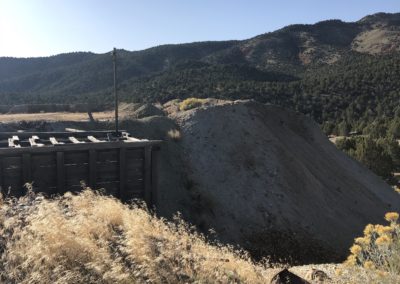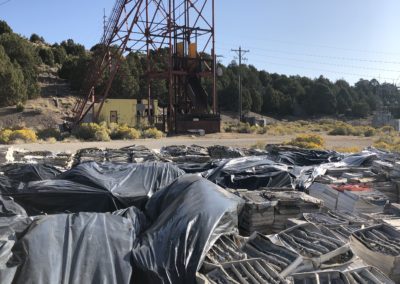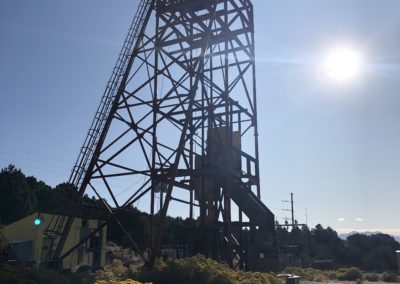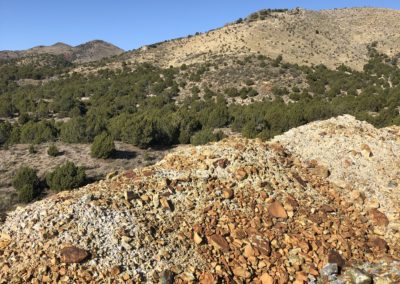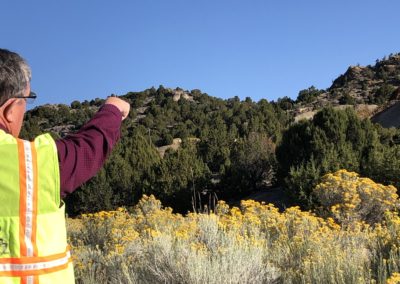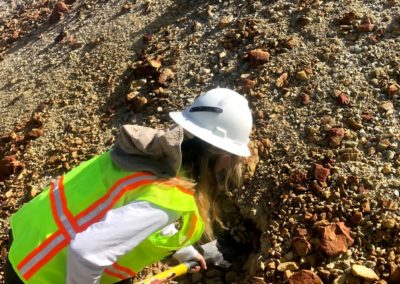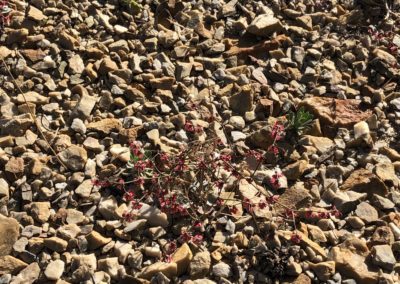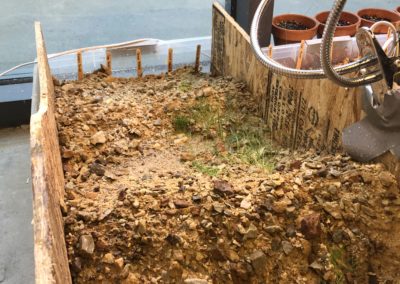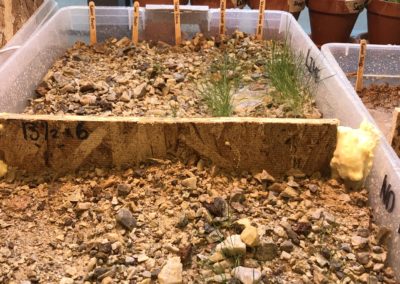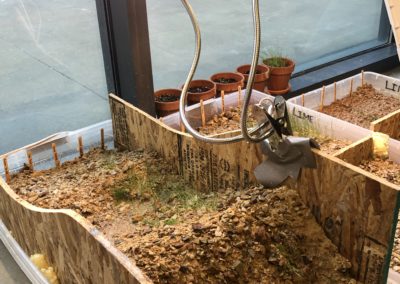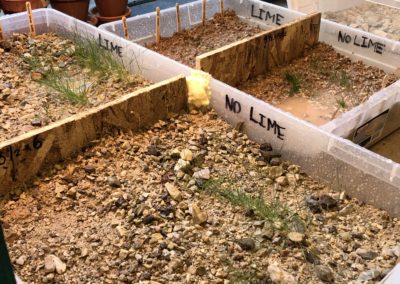Mine Dump Reclamation, Historic Tintic Mining District
Overview
Over the course of the past year, Mines Squared was tasked with the reclamation efforts proposed by Tintic Consolidated Metals for a historic, inactive mine site in the old mining town of Eureka, Utah. Tintic Consolidated Metals sought this kind of solution in order to restore the natural environment displaced by previous mining activities. While various options had the potential of being explored, a focus on revegetation and topographic reclamation was taken.
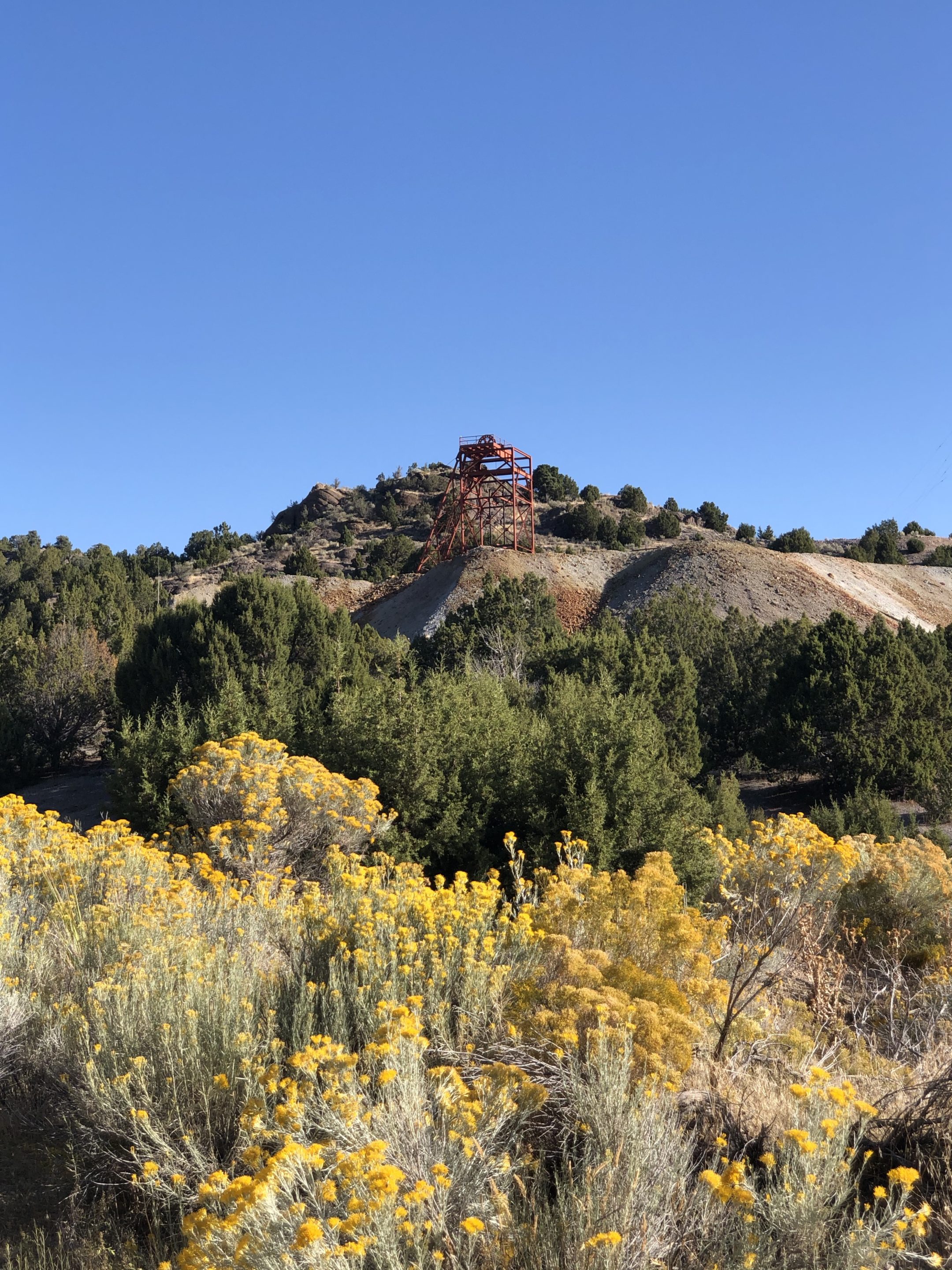
Team Members
- Emma Braun
- Melissa Laber
- Mariah Papac
- Gibson Stone
- Shea Zeman
The Client
- Tintic Consolidated Metals LLC
Acknowledgements
Mines Squared would like to thank Paul Korpi, Tia Misuraca, and Vern Tharp of Tintic Consolidated Metals; Lisa Woodward and the Colorado School of Mines Capstone Design Course; Tom Wildman and Chris Bellona of the Colorado School of Mines Civil and Environmental Engineering Department; and the TSA security agent at the Salt Lake City Airport.
Video
Elevator Pitch
Mining has been common across the world since mankind sought to advance themselves and differentiate their communities for a more competitive edge. In this way, mining has been at the crux of most human development. Mine tailings and residual heavy metals pollute the surface above many mine sites, creating a significant loss to vegetation and creating a need to correct the situation before the land becomes inhospitable to growth. Though various revegetation efforts can lead to long term environmental issues if not addressed properly, the significant attention dedicated to these principles of biological preservation and social awareness has promoted the overall issue to develop more positive solutions for mine tailings and ultimately a more beneficial outcome.
Today, one of those options is being explored by the Colorado School of Mines design team, Mines Squared. Through investigating revegetation based in phytoremediation and soil stability, the team determined a final plan for implementation at the Apex 2 tailings pile, located in the Tintic Historic Mining District. Despite highly acidic soil and steep slopes, an optimal seed mix and regrading plan were determined to ensure the success of revegetation efforts on site.
Through site remediation, mine sites will be able to lessen the damage done through extraction and encourage mining companies to create a plan for the future with the environment in consideration. Mines Squared has been excited to contribute to this project with such a large impact on the world around them and hopes to see phytoremediation grow in the years to come.
Design Approach
Initially, the team traveled to Utah to determine how they wanted to approach the design problem. Following a site analysis on several mines owned by Tintic Consolidated Metals, Mines Squared determined the best approach would be an in-depth analysis of a specific site. The team comprised of Environmental Engineering and Civil Engineering majors decided to focus on the revegetation of the Apex #2 Mine site where low pH acid waste rock and steep slopes posed a significant challenge for plant growth in the area. In order to combat these issues, the team came up with a unique testing solution where a variety of seed types could be tested in both sloped and flat conditions as well as in pH corrected soil and non-corrected soil.
Four samples of mine rock waste were chemically tested for their metal concentration and respective pHs. Toxicity Characteristics Leaching Procedure (TCLP) and Colorado Division of Minerals and Geology Test (CDMG) tests were run and found that the samples did not have high concentrations of metals. pH levels were taken using a pH probe for each sample, a mix of the highest and lowest pH samples, and all of the samples mixed together. The results of the high/low mix and all mix are shown in Table 1 below.
| Table 1: pH Values of Rock Waste Mix | ||
| High/Low Mix | All Mix | |
| pH | 4.52 |
3.55 |
The experiment designs were created to determine the overall effectiveness of a potential solution on a small scale. To test plant growth on sloped surfaces, a custom box was built with 30 and 45-degree slopes based on a CAD analysis of the site. In addition to the slope viability, a lime additive was used in select boxes with different soil sample mixes to determine the effectiveness of lime at increasing pH. The lime additive was left out of certain mixes to determine if raising the pH was necessary for the plants selected. Plants were chosen to preserve similarity to native vegetation in the area and for their ability to grow in disturbed conditions.
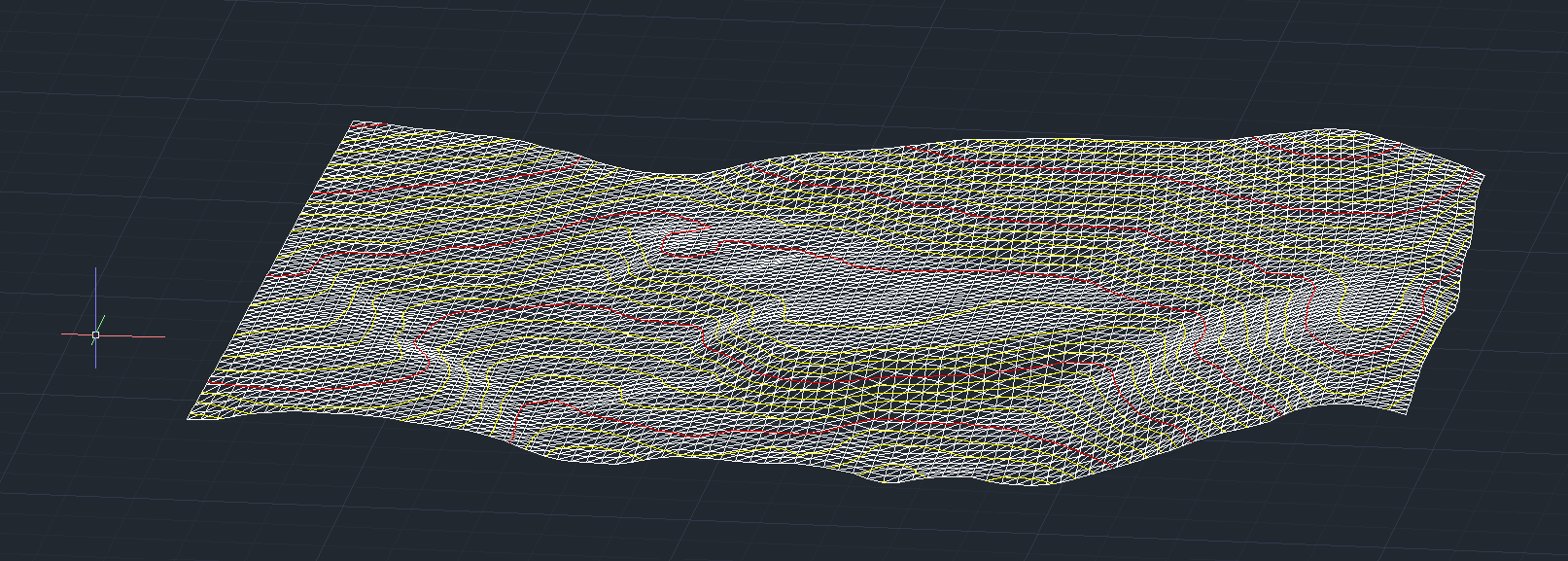
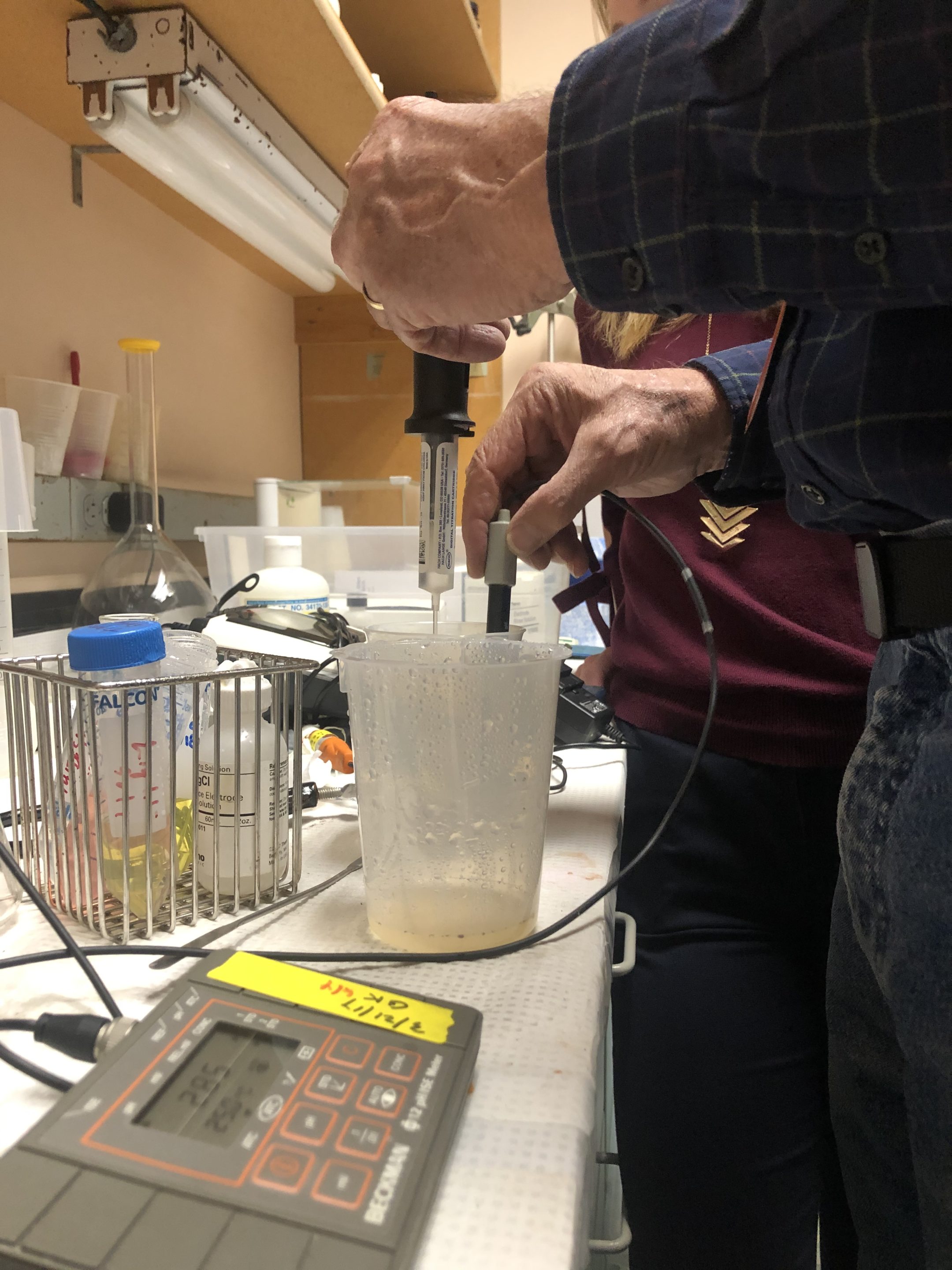
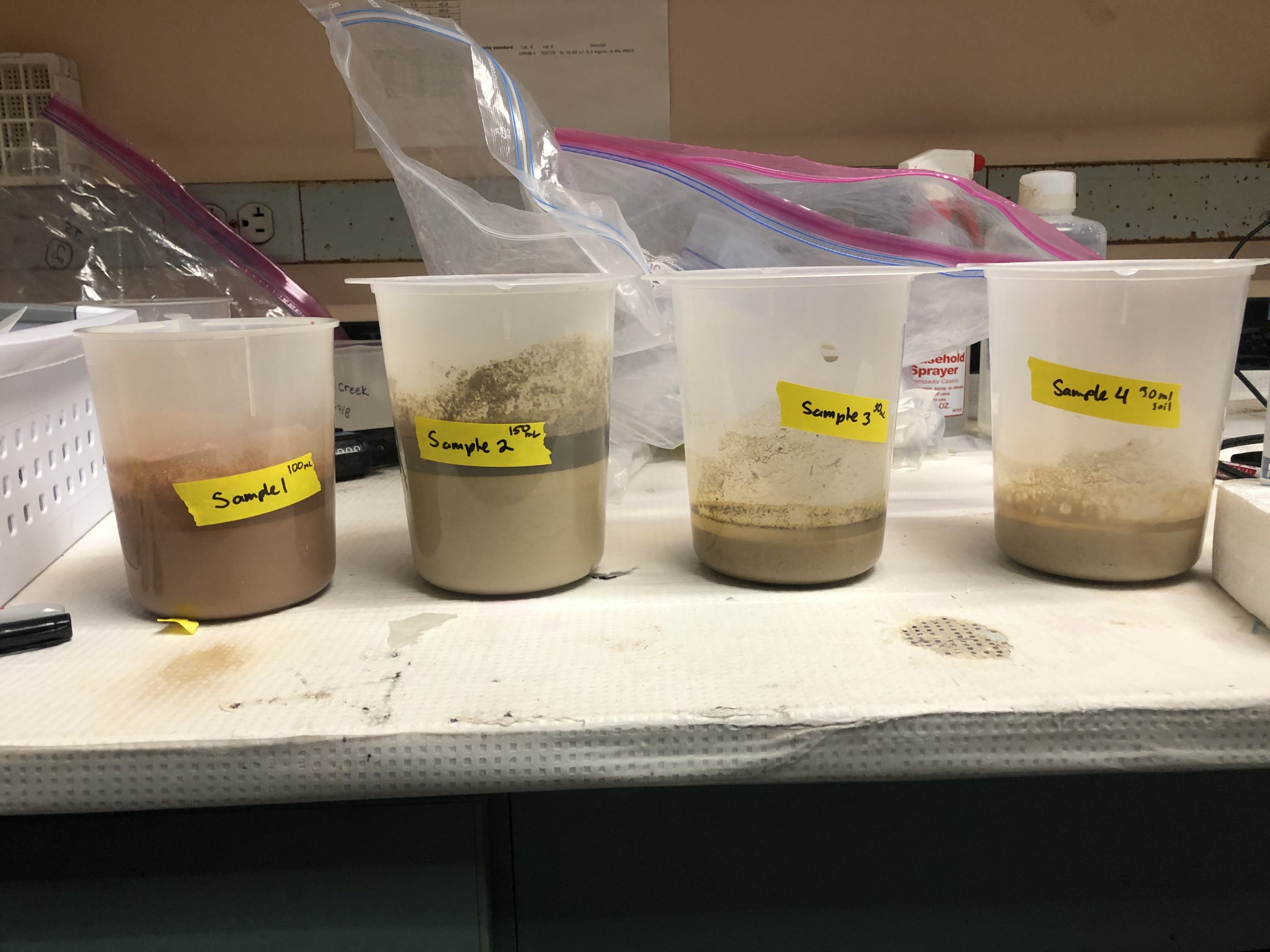
Design Solution
Five types of plants were chosen for testing, sagebrush, rubber rabbitbrush, crested wheatgrass, western wheatgrass, and sheep fescue. After the project completion, the team determined an optimal seed mix would contain crested wheatgrass, western wheatgrass, sheep fescue, and rubber rabbitbrush. Sagebrush was left out of the seed mix because it did not grow in the tests even though it thrives at the Apex #2 Mine Site. The amounts of each seed type in the seed mix were determined based on recommendations from the seed company and the USDA. These amounts along with their approximate cost can be seen in Table 2 below.
| Table 2. Optimal Seed Mix Amounts and Cost | |||||
| Seed | Recommended seeding density (lbs) | Doubled density for harsh soils | Divide by three | Pounds per acre | Approximate cost per pound |
| Sheep fescue | 2-4 | 8 | 2.67 | 3 | 3.65 |
| Crested wheatgrass | 3-7 | 14 | 4.67 | 5 | 3.95 |
| Western wheatgrass | 8-16 | 32 | 10.67 | 11 | 4.25 |
| Rubber rabbitbrush | – | – | – | 1 | 18.00 |
| Total | – | – | – | 20 | 95.45 |
The regrading will adjust the slope to a maximum of a 45-degree angle. There will also be no addition of new soil and the boundary of disturbance will only extend approximately 10 feet into existing vegetation in limited areas. Most rock waste will be removed from the south side of the tailings pile and then placed in the concave portion of the southwest side of the pile located between the site access road and the tailings pile. This portion is also fairly steep, so the addition of rock waste will mitigate this excess sloping.
Overall the implementations of this solution will provide a beneficial addition to the lifecycle of the area. Revegetation is important in the reclamation of land and by paying significant attention to the use of native grasses and avoiding introducing external material, the team allowed a near-closed system solution integration for the overall revegetation of the site that can be expanded in the future to more areas and mines.
Next Steps
 The next step for this project is taking the testing to the field. The team recommends testing on-site with two small test plots, one with lime amendment and one without. This would allow for the testing of the seed mix under natural conditions. In these conditions, the lime additive may prove to be essential due to the additional difficulty of growing in a harsh climate may cause the seedlings too much stress to grow in the already low pH. Making a broader impact was important to the team, so an experimentation process was created and written up, so the testing procedure could be used on other mine reclamation sites. The testing solution could be implemented at other mine sites, with the requirements of access to lime, time and access to testing materials, native species, and excess acid rock waste.
The next step for this project is taking the testing to the field. The team recommends testing on-site with two small test plots, one with lime amendment and one without. This would allow for the testing of the seed mix under natural conditions. In these conditions, the lime additive may prove to be essential due to the additional difficulty of growing in a harsh climate may cause the seedlings too much stress to grow in the already low pH. Making a broader impact was important to the team, so an experimentation process was created and written up, so the testing procedure could be used on other mine reclamation sites. The testing solution could be implemented at other mine sites, with the requirements of access to lime, time and access to testing materials, native species, and excess acid rock waste.
Meet the Team
Emma Braun
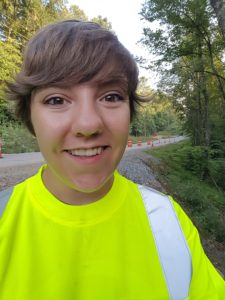 Emma Braun is majoring in civil engineering. She is originally from Aurora, Colorado and can often be found hiking, glassblowing or attending way too many Rockies games. She has focused her education on the geotechnical aspects of civil engineering and has been pursuing a combined Bachelors and Masters degree in this field at Colorado School of Mines. Emma’s interest in this project began with the slope stability issues that could be solved on site as the design was finalized.
Emma Braun is majoring in civil engineering. She is originally from Aurora, Colorado and can often be found hiking, glassblowing or attending way too many Rockies games. She has focused her education on the geotechnical aspects of civil engineering and has been pursuing a combined Bachelors and Masters degree in this field at Colorado School of Mines. Emma’s interest in this project began with the slope stability issues that could be solved on site as the design was finalized.
Melissa Laber
 Melissa Laber is majoring in environmental engineering. She is originally from Southern Ontario, Canada and enjoys running, crafting and spending time with her many pets. Her professional interest is site remediation. She really enjoyed working on the Tintic Mining Reclamation project due to its relevance to her professional interest.
Melissa Laber is majoring in environmental engineering. She is originally from Southern Ontario, Canada and enjoys running, crafting and spending time with her many pets. Her professional interest is site remediation. She really enjoyed working on the Tintic Mining Reclamation project due to its relevance to her professional interest.
Mariah Papac
 Mariah Papac is majoring in environmental engineering. She is originally from Salt Lake City, UT and enjoys playing soccer, trail running, climbing, and cooking/baking in her spare time. She is most interested in going into research in hydrology professionally. She enjoyed working on this project because it helped return a disturbed site to its natural environment.
Mariah Papac is majoring in environmental engineering. She is originally from Salt Lake City, UT and enjoys playing soccer, trail running, climbing, and cooking/baking in her spare time. She is most interested in going into research in hydrology professionally. She enjoyed working on this project because it helped return a disturbed site to its natural environment.
Gibson Stone
 Gibson Stone is majoring in environmental engineering. She is originally from San Marcos, CA and enjoys running, knitting, and playing instruments in her spare time. Professionally, she is most interested in hydraulic and hydrologic engineering problems and stormwater management. Her favorite part of working on the Tintic Mining Reclamation project was getting to make a stop at In-N-Out when the team flew to Utah for their site visit.
Gibson Stone is majoring in environmental engineering. She is originally from San Marcos, CA and enjoys running, knitting, and playing instruments in her spare time. Professionally, she is most interested in hydraulic and hydrologic engineering problems and stormwater management. Her favorite part of working on the Tintic Mining Reclamation project was getting to make a stop at In-N-Out when the team flew to Utah for their site visit.
Shea Zeman
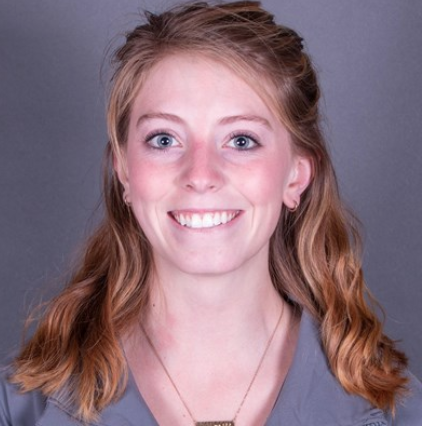 Shea Zeman is majoring in environmental engineering. She is originally from Golden, CO and enjoys running, hiking, climbing, and reading in her spare time. She will be continuing her education in the Colorado School of Mines graduate program to further her knowledge of mine waste and reclamation. Her favorite part of this project was getting to work with such an amazing client and teammates.
Shea Zeman is majoring in environmental engineering. She is originally from Golden, CO and enjoys running, hiking, climbing, and reading in her spare time. She will be continuing her education in the Colorado School of Mines graduate program to further her knowledge of mine waste and reclamation. Her favorite part of this project was getting to work with such an amazing client and teammates.
